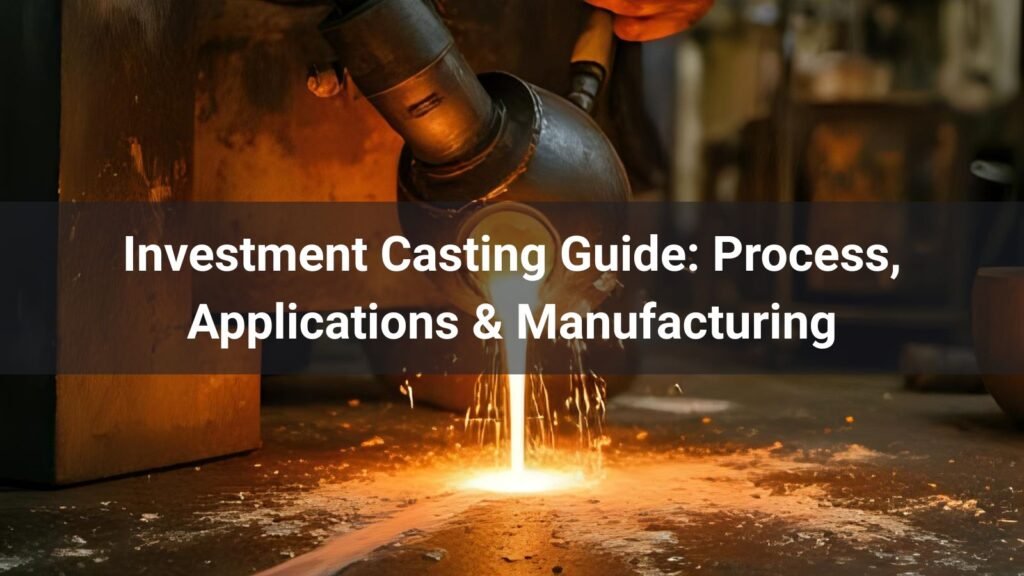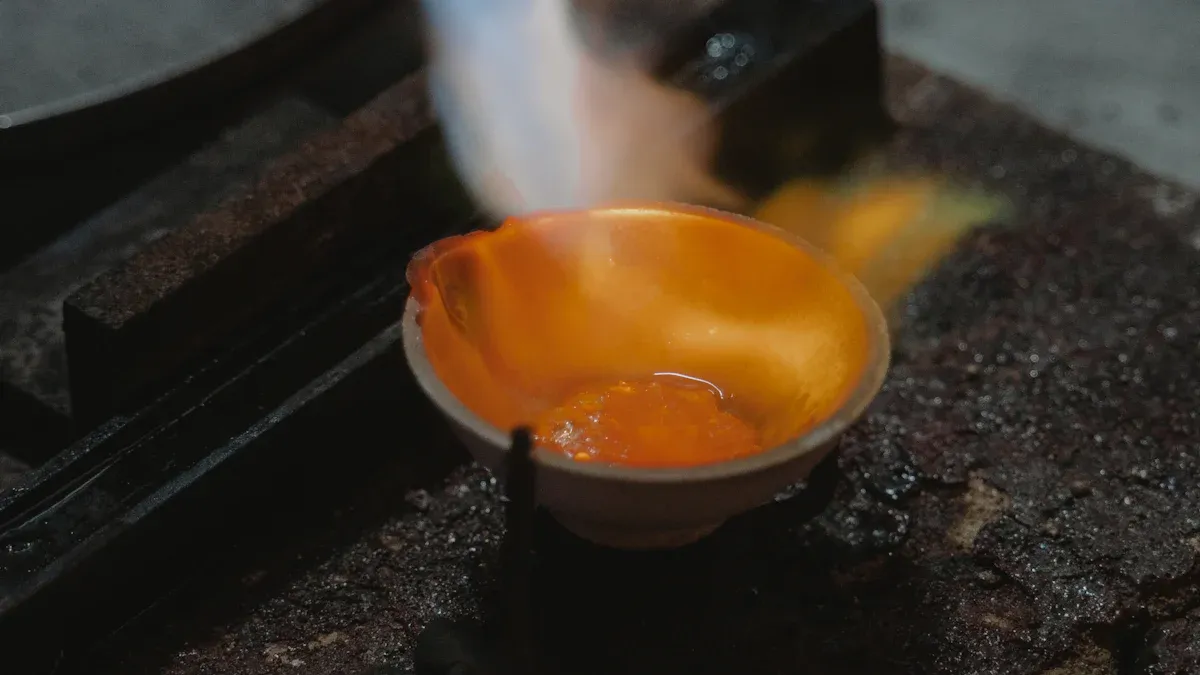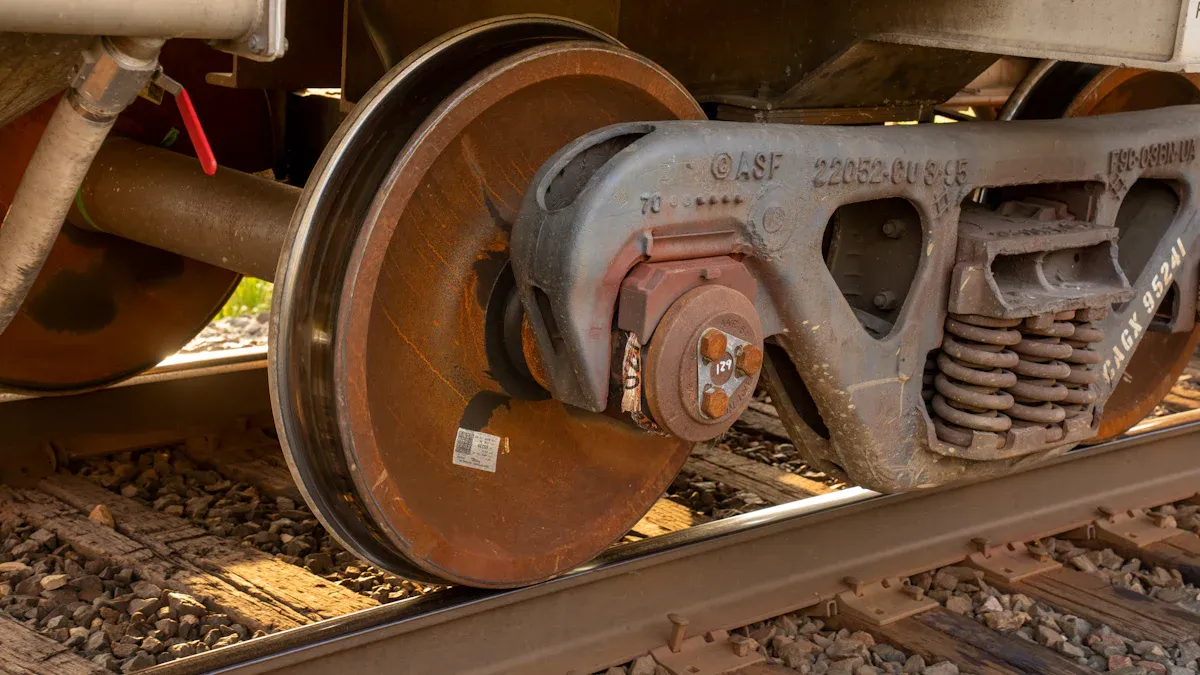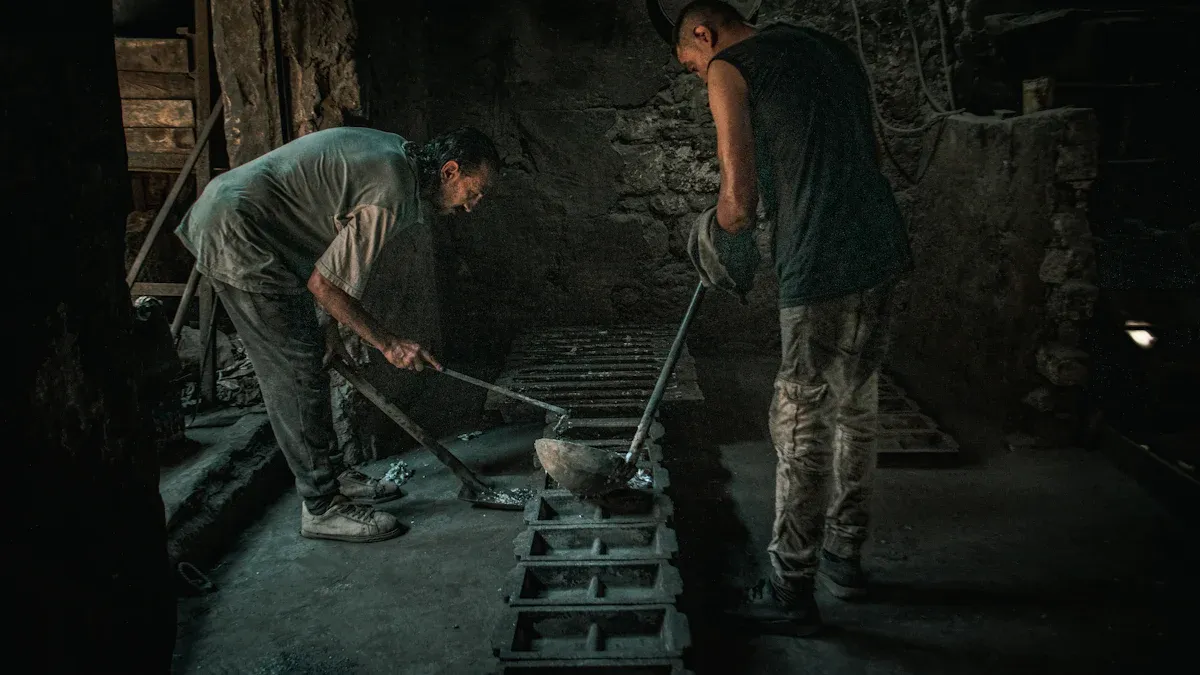
Investment casting, also known as precision casting or lost wax casting, represents one of the most versatile and accurate metal forming processes in modern manufacturing. This comprehensive guide explores the investment casting process, its applications across industries, and why it remains the preferred choice for creating complex, high-precision metal components. From automotive parts to medical devices, investment casting delivers exceptional dimensional accuracy and superior surface finishes that meet the demanding requirements of today’s manufacturing landscape.
Table of Contents
- What is Investment Casting?
- The Investment Casting Process Explained
- Investment Casting in Manufacturing Process
- What is Investment Casting Used For?
- Materials and Alloys in Investment Casting
- Quality Control and Precision Standards
- Investment Casting vs Other Casting Methods
- Selecting the Right Investment Casting Partner
What is Investment Casting?
Investment casting is a precision manufacturing process that creates complex metal parts by pouring molten metal into ceramic molds formed around wax patterns. This ancient technique, dating back over 5,000 years, has evolved into one of the most sophisticated casting methods available today. The process derives its name from the “investment” of the wax pattern in a ceramic shell, which is then removed through melting, leaving a precise cavity for metal casting.
The investment casting process offers unparalleled design flexibility, allowing manufacturers to produce intricate geometries with tight tolerances that would be difficult or impossible to achieve through other manufacturing methods. This precision casting technique can create parts with wall thicknesses as thin as 0.5mm while maintaining dimensional accuracy within ±0.13mm (±0.005 inches).
Modern investment casting utilizes advanced materials and computer-controlled processes to ensure consistent quality and repeatability. The method is particularly valued for its ability to produce near-net-shape components that require minimal post-processing, reducing both manufacturing costs and lead times.
The Investment Casting Process Explained
Understanding what an investment casting process involves requires examining each critical step that transforms raw materials into precision components. The investment casting manufacturing process consists of several interconnected stages, each contributing to the final product’s quality and accuracy.
Pattern Creation and Assembly
The process begins with creating detailed wax patterns that replicate the final part’s geometry. These patterns are typically injection-molded using specialized waxes that provide excellent dimensional stability and smooth surface finish. Multiple patterns are then assembled onto a central wax runner system, creating a tree-like structure that allows multiple parts to be cast simultaneously.
| Process Step | Description | Key Requirements |
|---|---|---|
| Pattern Creation | Injection molding of wax patterns | Dimensional accuracy, surface finish |
| Shell Building | Ceramic coating application | Uniform thickness, strength |
| Dewaxing | Wax removal through heating | Complete removal, mold integrity |
| Metal Pouring | Molten metal casting | Temperature control, fill rate |
| Finishing | Part removal and processing | Quality inspection, machining |
Shell Building and Firing
The assembled wax patterns undergo a shell-building process where they are repeatedly dipped in ceramic slurry and coated with refractory sand. This creates a strong ceramic shell around the wax patterns. The shell thickness typically ranges from 6-10mm, providing sufficient strength to withstand the pressures and temperatures of metal casting.
After the ceramic shell has dried completely, it undergoes a firing process that removes the wax patterns and strengthens the ceramic mold. This dewaxing step is critical, as any residual wax can cause defects in the final casting.
Metal Pouring and Solidification
The preheated ceramic molds are filled with molten metal at precisely controlled temperatures. The pouring process must be carefully managed to ensure complete mold filling while avoiding turbulence that could introduce defects. Solidification occurs within the ceramic shell, with cooling rates controlled to optimize the metal’s microstructure and properties.
Investment Casting in Manufacturing Process
Investment casting plays a crucial role in modern manufacturing processes across numerous industries. The technique’s ability to produce complex geometries with exceptional precision makes it indispensable for applications requiring high-performance components. Understanding the metals and alloys in investment casting is essential for manufacturers seeking to optimize their production processes.
In manufacturing environments, investment casting serves as both a primary production method and a complement to other manufacturing processes. The near-net-shape capabilities of precision casting significantly reduce the need for extensive machining, leading to material savings and reduced production costs. This efficiency makes investment casting particularly attractive for high-value components where material costs are a significant factor.
Integration with Modern Manufacturing
Contemporary manufacturing facilities integrate investment casting with advanced technologies such as 3D printing for pattern creation, automated shell building systems, and computer-controlled melting and pouring equipment. This integration ensures consistent quality while maintaining the flexibility to produce both prototype quantities and high-volume production runs.
The manufacturing process benefits from investment casting’s capability to produce components that meet stringent dimensional tolerances without secondary operations. This characteristic is particularly valuable in lean manufacturing environments where minimizing waste and reducing process steps are priorities.
What is Investment Casting Used For?
Investment casting applications span across diverse industries, each benefiting from the process’s unique advantages. The versatility of this precision casting method allows manufacturers to address complex design challenges while maintaining cost-effectiveness and quality standards.
Automotive Industry Applications
The automotive sector represents one of the largest markets for investment casting, utilizing the process for critical engine components, transmission parts, and chassis elements. Most common automotive components produced by investment casting include turbocharger housings, exhaust manifolds, and precision gears that require exceptional durability and performance.
Automotive manufacturers value investment casting for its ability to produce lightweight components with complex internal passages and cooling channels. These features contribute to improved fuel efficiency and reduced emissions, aligning with industry trends toward more sustainable transportation solutions.
Medical Device Manufacturing
The medical industry relies heavily on investment casting for producing surgical instruments, implants, and diagnostic equipment components. How investment casting shapes modern medical devices demonstrates the critical role of precision casting in advancing healthcare technology.
Medical applications demand the highest levels of precision and biocompatibility, requirements that investment casting consistently meets. The process enables the production of complex surgical tools with intricate geometries that would be challenging to manufacture through conventional machining methods.
Agricultural Machinery Components
Agricultural equipment manufacturers utilize investment casting for producing durable components that withstand harsh operating conditions. A complete guide to custom and OEM casting solutions for agricultural machinery provides insights into how precision casting addresses the unique challenges of agricultural applications.
The ability to cast complex shapes in wear-resistant alloys makes investment casting ideal for agricultural applications where component longevity and reliability are paramount. Parts such as tillage tool points, harvester components, and hydraulic valve bodies benefit from the superior mechanical properties achievable through investment casting.
Materials and Alloys in Investment Casting
The selection of appropriate materials is crucial for successful investment casting applications. The process accommodates a wide range of metals and alloys, each offering specific properties suited to different applications. Material selection considerations include mechanical properties, corrosion resistance, temperature performance, and cost factors.
Steel Alloys and Applications
Steel investment castings provide excellent strength-to-weight ratios and can be heat-treated to achieve specific mechanical properties. Carbon steels, alloy steels, and stainless steels each offer distinct advantages for different applications. Exploring the uses of 400 series steel investment castings in modern industries highlights the versatility of martensitic stainless steels in demanding applications.
The choice between different steel grades depends on factors such as required strength, corrosion resistance, and operating temperature. Investment casting allows for precise control of steel composition and microstructure, enabling the production of components with optimized properties.
| Material Category | Key Properties | Typical Applications |
|---|---|---|
| Carbon Steel | High strength, good machinability | Structural components, gears |
| Stainless Steel | Corrosion resistance, strength | Food processing, medical devices |
| Aluminum Alloys | Lightweight, corrosion resistance | Aerospace, automotive components |
| Superalloys | High-temperature strength | Gas turbines, jet engines |
Specialized Alloys for Demanding Applications
High-performance applications often require specialized alloys that provide exceptional properties under extreme conditions. Superalloys, titanium alloys, and specialty steels can be successfully cast using investment casting techniques, making it possible to produce components for aerospace, energy generation, and defense applications.
The ability to cast these challenging materials while maintaining dimensional accuracy and surface quality gives investment casting a significant advantage over other manufacturing methods when working with exotic alloys.
Quality Control and Precision Standards
Quality control in investment casting involves comprehensive testing and inspection procedures that ensure consistent product quality and dimensional accuracy. Modern investment casting facilities employ advanced testing methods to verify material properties, dimensional compliance, and structural integrity.
Dimensional Accuracy and Tolerances
Investment casting typically achieves dimensional tolerances of ±0.13mm (±0.005 inches) for small features, with larger dimensions maintaining proportionally tight tolerances. What is the standard precision of machining provides context for understanding how investment casting tolerances compare to other manufacturing processes.
The precision achievable through investment casting often eliminates the need for extensive secondary machining operations, reducing production costs and lead times while maintaining superior dimensional accuracy.
Non-Destructive Testing Methods
Quality assurance programs incorporate various non-destructive testing methods including X-ray inspection, magnetic particle testing, and dye penetrant inspection. These methods detect internal defects, surface discontinuities, and material inconsistencies without compromising the integrity of the finished parts.
At Keming Machinery, we implement comprehensive quality control measures including hardness testing using Brinell, Rockwell, and Vickers methods. Our X-ray testing capabilities detect various defects including gas porosity, shrinkage, and cracks. Magnetic particle inspection ensures that heat-treated and machined castings meet the highest quality standards.
Investment Casting vs Other Casting Methods
When comparing manufacturing methods, investment casting offers distinct advantages over alternative processes. Understanding these differences helps manufacturers select the most appropriate method for their specific requirements. Investment casting vs die casting which suits your needs provides detailed comparisons between these popular casting methods.
Investment Casting vs Sand Casting
While sand casting offers cost advantages for large, simple parts, investment casting excels in producing complex geometries with superior surface finishes and dimensional accuracy. Sand casting and permanent mold casting what sets them apart explores the fundamental differences between these casting approaches.
The choice between investment casting and sand casting often depends on factors such as part complexity, required tolerances, surface finish requirements, and production volumes. Investment casting typically provides better dimensional control and surface quality, while sand casting may be more economical for larger, less complex components.
Design Flexibility and Complexity
Investment casting enables the production of parts with undercuts, internal passages, and complex geometries that would be difficult or impossible to achieve through other methods. This design flexibility allows engineers to optimize part performance while minimizing assembly requirements and reducing overall system complexity.
The ability to incorporate multiple functions into a single cast component often results in cost savings and improved reliability compared to assembled alternatives. This advantage is particularly valuable in aerospace and automotive applications where weight reduction and performance optimization are critical.
Selecting the Right Investment Casting Partner
Choosing an investment casting manufacturer requires careful evaluation of technical capabilities, quality systems, and production capacity. How to select the right alloy steel casting partner for lost wax casting provides guidance for making this critical decision.
Technical Capabilities and Equipment
Successful investment casting requires sophisticated equipment and technical expertise. Manufacturers should possess modern melting facilities, precision shell building systems, and comprehensive quality control capabilities. The ability to handle diverse materials and complex geometries while maintaining consistent quality is essential.
Keming Machinery offers comprehensive investment casting services backed by over 20 years of industry experience. Our modern facility features 30 lathes and 10 CNC machines, ensuring high-efficiency precision manufacturing. With annual production capacity exceeding 2,000 tons and over 5,000 different product types developed, we provide the expertise and capacity needed for demanding applications.
Quality Certifications and Standards
Leading investment casting manufacturers maintain certifications to international quality standards including ISO 9001, AS9100 for aerospace applications, and industry-specific certifications. These certifications demonstrate commitment to quality and provide assurance of consistent manufacturing processes.
At Keming Machinery, we comply with numerous international standards including Chinese GB, American ASTM and AISI, German DIN, French NF, British BS, Japanese JIS, Australian AS, and AAR requirements. This comprehensive certification coverage ensures our products meet global market requirements and quality expectations.
Geographic and Logistical Considerations
The location of your investment casting partner affects lead times, shipping costs, and communication efficiency. Why choose China investment casting manufacturer as your steel casting supplier examines the advantages of working with established Chinese manufacturers.
China has emerged as a leading destination for investment casting services, offering competitive costs, advanced technology, and skilled workforce. Top investment casting suppliers in China you should know provides insights into the capabilities available in this important manufacturing region.
Partnership and Support Services
The best investment casting partners provide comprehensive support throughout the product development and production process. This includes design optimization, material selection guidance, quality assurance, and post-casting services such as machining and finishing.
Keming Machinery is strategically located in Yinzhou, Ningbo, China, providing convenient access to major transportation networks. Our 5,000 square meter facility and team of over 50 skilled employees are dedicated to providing exceptional customer service and technical support. We offer complete solutions from initial design consultation through final delivery, ensuring your investment casting requirements are met with precision and reliability.
Contact Keming Machinery for Your Investment Casting Needs
Ready to explore how investment casting can benefit your next project? Contact our experienced team at kminvestmentcast.com to discuss your specific requirements and receive a detailed quote. With our comprehensive capabilities in investment casting, shell mold sand casting, lost foam casting, and precision machining, we’re equipped to handle projects of any complexity and scale.
Our commitment to quality, backed by extensive international certifications and advanced testing capabilities, ensures your investment casting components meet the highest standards for performance and reliability.
Investment casting continues to evolve as new materials, technologies, and applications expand its capabilities. From traditional applications in jewelry and art to cutting-edge components for aerospace and medical devices, this versatile manufacturing process remains at the forefront of precision manufacturing. Understanding what investment casting is, how the process works, and its applications across industries enables manufacturers to make informed decisions about their production strategies and supplier partnerships.




